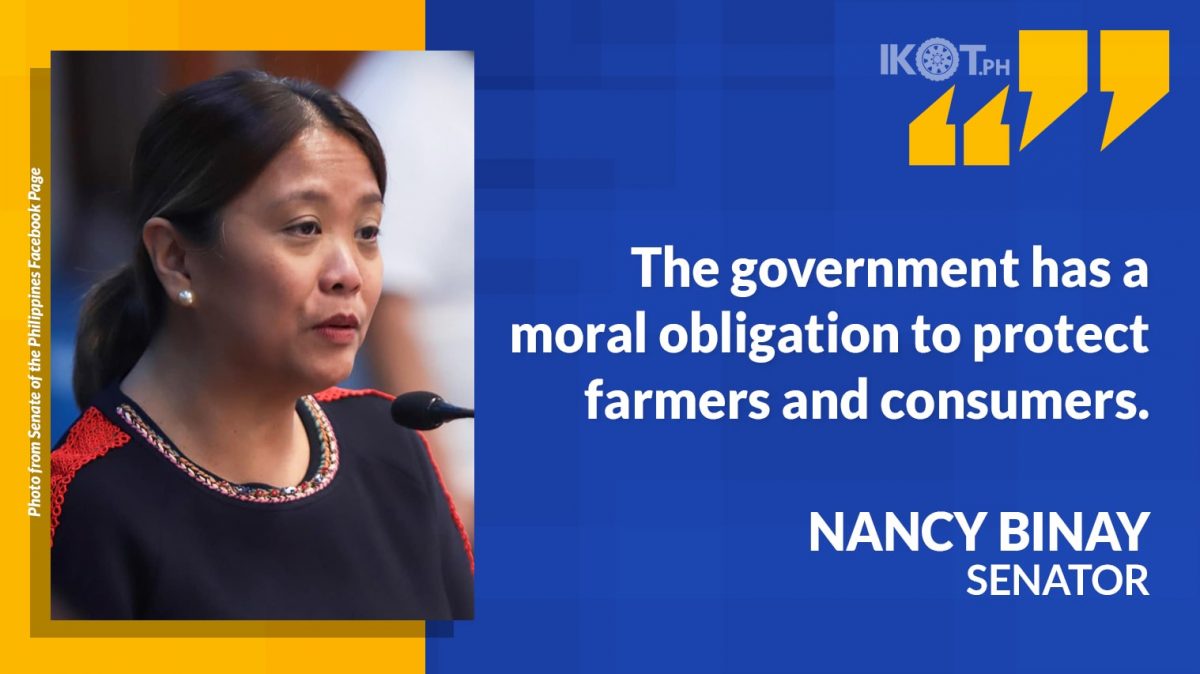Senator Nancy Binay urged the National Food Authority to start working with local government units (LGUs) to map out vulnerable areas affected by El Nino and the influx of imported rice.
According to Binay, a vulnerability map can help the NFA prioritize areas where they should focus their buying efforts.
“By targeting regions with a high concentration of struggling farmers, the NFA can ensure a more efficient use of their resources and reach those who need support the most.”
“Matagal nang napapabayaan ang ating mga rice farmers–‘di lang naman pagdating sa bilihan ng palay, pati na rin sa mga binibigay na ayuda at tulong sa pagsaka. By targeting regions with a high concentration of struggling farmers, the NFA can ensure a more efficient use of their resources and reach those who need support the most,” the veteran legislator pointed out.
While the NFA Council provides some relief by selling rice 20% below market value (around P40-45 per kilo), amendments to the Rice Tariffication Law (RTL) would grant the NFA more power to sell rice directly to markets at lower prices, potentially benefiting both farmers and consumers.
“A more efficient NFA buying system, coupled with targeted support for cooperatives, can potentially increase the availability of locally-sourced rice at competitive prices. This benefits consumers, especially low-income households, by offering them affordable options for quality rice. A localized approach, with the help of LGUs and a vulnerability map, can be a game-changer,” the seasoned lawmaker explained.
The lady senator added that with the help of mapping, a targeted approach somehow empowers farmers, and has the potential to bridge the gap between the NFA’s programs and Filipino farmers thereby ensuring a more sustainable future for the rice industry and protecting the interests of both producers and consumers.
“The government has a moral obligation to protect farmers and consumers. Dapat ang NFA ang sumasalag sa mga rice farmers from enterprising middlemen–kasama sa mandate nila ‘yun. We cannot allow middlemen and importers to influence the rice market that’s why we need to highlight the need of a targeted support. NFA can serve as the direct buyer and should be in the forefront in offering farmers high buying prices,” she noted.
Binay added that a vulnerability map can identify small cooperatives that need help, and understand the specific needs of different regions allowing the NFA and LGUs to tailor their support programs. This could involve providing access to better storage facilities, farm-to-market road improvements, or financial assistance programs specifically designed for marginalized farmers in vulnerable areas.
“Ang importante, buhusan natin ng suporta ang ating mga magsasaka at ‘wag sana nating babaratin sa presyo ng kanilang ani.”
“Ang importante, buhusan natin ng suporta ang ating mga magsasaka at ‘wag sana nating babaratin sa presyo ng kanilang ani. They have long been suffering from neglect and unfair competition. Even small-scale rice farmers often lack the bargaining power of large commercial players which leads them being offered lower prices for their palay by private traders who take advantage of their situation. That is why NFA also needs to review their support systems and unreliable buying programs,” she added.
Although the Senate is taking steps to address these issues, Binay said there are calls for more comprehensive and sustained efforts by the NFA to ensure Filipino rice farmers are adequately supported and can compete fairly in the market.



